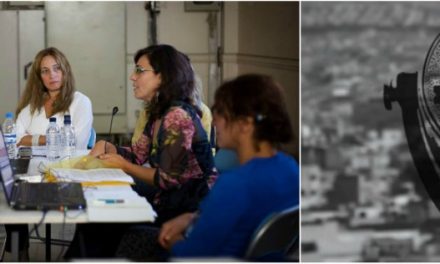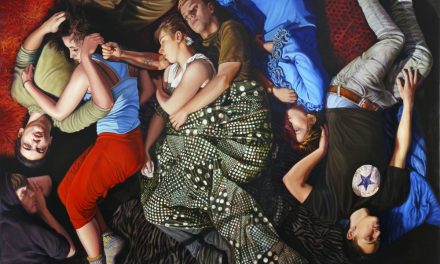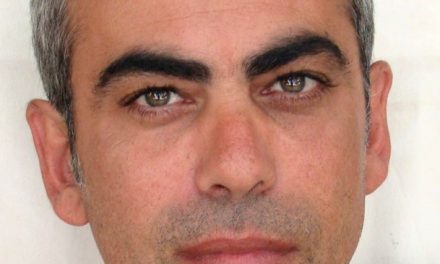Endeavor Greece was launched in 2012 as part of the global Endeavor Network to support high-impact entrepreneurs. Founded in the beginning of a critical economic turmoil, Endeavor Greece aimed to serve the country’s entrepreneurship and help it flourish at the exact moment it was most needed. Since then, it has been at the epicenter of the Greek Innovation Ecosystem, by facilitating local and global entrepreneurial development through mentorship, services, and programs that help innovative founders enter hard-to-access emerging markets, and make economies thrive. (Cover photo: amna.gr)
Its mission is not simply to support startups, but to back high-impact entrepreneurs who can scale, create jobs, and strengthen the broader economy. Endeavor is neither an incubator nor a traditional accelerator; it selects, supports, and invests in founders through mentoring, global networks, and, when possible, capital via Endeavor Catalyst. Its ultimate goal is the Multiplier Effect—successful founders reinvesting their time, knowledge, and capital to help the next generation and build a resilient innovation ecosystem. As Endeavor’s leadership emphasizes, when successful founders give back time, knowledge, and capital to the next generation, the ecosystem gains depth and longevity.


By offering networking opportunities, access to capital and expertise, the Endeavor Greece programs help high-impact entrepreneurs with talent and innovative spirit to thrive, have a significant impact on their ecosystem and transform economies. An important role is played by the Scale Up Program, the early-stage support program, which in 2025 added two new cohorts and six new companies. Today it includes sixty active companies with founders in fifteen countries, reaffirming Endeavor’s goal of attracting talent to Greece and building global businesses from the country. At the same time, corporate innovation programs—from OPAP Forward, which has supported dozens of businesses and thousands of jobs, to the Visa Innovation Program Europe, as well as Rise Up, act as bridges between innovation and the real economy.
Recently, entrepreneurs, investors, executives of large organizations, mentors, founders, and representatives of the innovation ecosystem gathered at the former Hilton venue within the context of an Endeavor Greece meeting. The occasion marked the close of the year and focused on reviewing the year’s achievements and planning the next steps.
“2025 was a year of unprecedented technological acceleration,” notes the president of Endeavor Greece and co-owner and president of Phaea, Konstantza Spyrakou-Constantakopoulou, in her message on the Endeavor website. “Greek founders are no longer just riding the wave. They are helping to create it.” This phrase effectively served as the informal title of the gathering, because almost every discussion—whether about exits, investments, or new business plans—led to the same conclusion: the Greek innovation ecosystem has entered a phase of maturity, and with it comes a growing sense of responsibility.

2025 was a milestone year, as this model revealed its full potential. From the Athens Innovation Summit at the Odeon of Herodes Atticus to the first TechCrunch StrictlyVC in Athens, Greece moved to the center of the global tech and innovation conversation, while strong presences at major international events – Slush, VivaTech, FII, Gulfood, Idex – signaled a country acting with confidence and a clear narrative.

Endeavor’s global reach—spanning 50 markets, over 3,000 founders, and $700 million under management—translated into tangible results in Greece. Endeavor Catalyst invested $18 million in 12 Greek founders. Two leading Greek AI founders were selected as Endeavor Entrepreneurs, with Endeavor Catalyst participating in their funding rounds, which attracted global interest. In 2025 alone, the Endeavor Greece portfolio raised about $470 million in new capital, with six Greek companies included in Endeavor’s Global Outliers Class, ranked among the top 5% fastest-growing in the global network. These distinctions are not an end in themselves, but an indication that the ecosystem is gaining international momentum and confidence.
Behind the investment figures and headlines, however, lies another critical dimension. As Panagiotis Karampinis, Managing Director of Endeavor Greece, has pointed out, companies within the Endeavor ecosystem create new jobs, retain and repatriate talent, strengthen the country’s productive base, and contribute to the gradual transformation of the economic model. As was emphasized during the event, the goal is not only the generation of profits, but the diffusion of value across society, employment, and sustainable growth.
Endeavor Greece Video Interviews Series: Greeking Out 2.0
(Source: Endeavor Greece, amna.gr)
Government Startup Programs and Support in Greece
The Greek government has developed a range of programs and initiatives to support startups, innovation, and entrepreneurship. These programs aim to strengthen the national startup ecosystem, attract investment, and help new businesses grow both locally and internationally. Support is provided through direct government actions, public funding schemes, and cooperation with European institutions.

One of the most important government initiatives is Elevate Greece, which acts as the national gateway for startups. Managed by the General Secretariat for Research and Innovation under the Ministry of Development, Elevate Greece maintains the National Startup Registry. The Registry aims at monitoring startup entrepreneurship progress based on specific KPIs, at supporting them with benefits and incentives, and to operate as a dashboard of metrics to attract investors from Greece and abroad.
In addition to Elevate Greece, the Greek government offers public funding schemes and grants, many of which are co-funded by the European Union through the ESPA / NSRF 2021–2027 programs. These grants support areas such as digital transformation, research and development, green technologies, tourism innovation, and competitiveness. Funding programs are usually announced in specific calls and may focus on certain regions, industries, or business sizes. Startups can receive non-repayable financial support, provided they meet eligibility criteria and investment requirements.

Another major pillar of startup support in Greece is EquiFund, an initiative of the Greek State and the European Investment Fund (EIF), created with the ultimate goal of accelerating the development of the venture capital sector in Greece. This objective is achieved by channeling capital from EquiFund to intermediary financial institutions—namely, management teams selected by the EIF with the appropriate expertise—which then, in a professional and independent manner, select the business ventures and ideas to be financed. (photo source: antagonistikotita.gr)
The Greek government has also implemented new tax incentives and has introduced investment-based incentives connected to startups. Through recent changes to residency programs, investments in innovative Greek startups registered with Elevate Greece can be used as part of long-term residency schemes. These measures aim to attract foreign investors while supporting job creation and business growth in the country.
Beyond funding, Greece supports startups through public incubators, innovation hubs, and science parks. These structures often provide affordable office space, mentoring, training, networking opportunities, and help with accessing public funding. Many of these hubs are supported by national or regional authorities and work closely with universities, research centers, and private companies.

Additional support comes from public-sector-linked initiatives, such as entrepreneurship programs run by national employment agencies, regional authorities, and development laws. These programs may offer startup grants, advisory services, wage subsidies, or support for young entrepreneurs and first-time founders. Startups may also benefit from innovation challenges, competitions, and accelerator programs supported or endorsed by government bodies.
Overall, Greece’s startup support framework combines registration platforms, grants, venture capital stimulation, infrastructure, and policy incentives. Entrepreneurs are encouraged to register their startups early, monitor funding calls closely, and engage with incubators and innovation networks. Together, these government programs aim to create a supportive environment for innovation, economic growth, and sustainable entrepreneurship in Greece.
I.A.
TAGS: ECONOMY & DEVELOPMENT | INNOVATION | START-UPS














